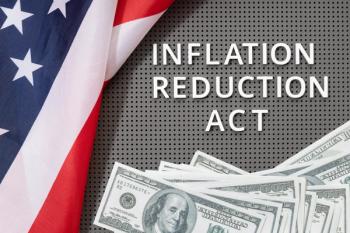
Rand Report: Private Payers Pay 247% of What Medicare Pays for Hospital Care
The leverage of "must-have" hospitals is one explanation for high relative prices. The researchers said private payers should support policies that encourage competition and fend off consolidation among payers.
Employers and private insurers paid 247% of what Medicare pays for hospital inpatient and outpatient services in 2018, according to a
Using data from all-claims database and self-insured plans from the District of Columbia and every state except Maryland, the Rand researchers paint a picture of the yawning gap between the amounts paid by private payers pay for hospital services, inclusive of professional services, and amounts paid by Medicare, the largest public payer.
The Rand research shows the relative difference steadily increasing from 2016, when it was 224%, to 230% in 2017, and 247% in 2018.
Their calculations show large differences among states, with ranging from 200% relative difference between private payers and Medicare in Arkansas, Michigan and Rhode Island to almost 325% in Florida, Tennessee, Alaska, South Carolina, and West Virginia.
It is well known that private payers pay more than Medicare for hospital services, so the Rand results are more likely to register as strong supporting evidence for a common belief than as major revelation. Like all research, it has limitations; for example, the Rand researchers did not have data from Medicare Advantage plan data. Still, the report systematically puts some numbers to the private payer-Medicare payment imbalance, and it builds on previous Rand reports about hospital pricing and the private payer-Medicare gap that first looked only at hospital prices in Indiana and then at prices in 25 states. This report takes in the entire country (Maryland is not included because of its all-payer system) and includes professional fees paid to physicians.
The American Hospital Association put out a statement criticizing the Rand report for making a"broad claim about pricing based on a cherry-picked and limited data set." The association also said the Rand researchers have perpetuated the erroneous idea that Medicare payments should be used as a benchmark "in spite of Medicaid reimbursing well below the cost of providing care."
One of the most common explanations for private payers paying more for hospital services is cost shifting: that private payers are, in effect, making up for underpayment by Medicare (and perhaps other public payers). But, notably, the Rand researchers didn’t find a strong correlation between hospital prices and the proportion of Medicare and Medicaid patients seen at a hospital.
Besides, wrote the researchers, “even if cost-shifting were a reasonable response to shortcomings in government payments, many employers would not consider it to be their responsibility to make up the shortfall when shopping for health care or for other goods and services."
Another explanation for the relative difference between private payers and Medicare is the leverage that the “must-have” hospitals wield when negotiating with private health plans.
This report by
- Provide employees with “usable price transparency information” to encourage use of lower-priced providers, although they not that price information alone is not enough to reduce the use higher-price providers
- Design health benefits that include narrow networks, tiered networks and reference pricing to shift employees to lower-priced providers
- Design heath benefits that move patient care away from hospitals. They cite a reference pricing program by the California Public Employee’s Retirement System as an example.
- Contract directly with a healthcare system. General Motors' direct contract with the Henry Ford Health System is mentioned as an example.
- Negotiate contracts with providers that set prices as a percentage of the amount paid by Medicare. They mention that health plans for state employees in Oregon and Montana have moved to multiple-of-Medicare contracting arrangements.
- Support efforts and policies that promote competition among providers and fend off consolidation. They cite as an example the lawsuit brought by several California employers against the Sutter Health system over alleged anticompetitive practices.
- Support policies that limit out-of-network payments, which the Rand researchers say can have a knock-on effect on in-network negotiated rates.
- Support all-payer and global budget programs like the one that has been implemented in Maryland.
The Rand researchers depended on two sources of claims data for their research: claims data from 120 self-insured employers who volunteered to be part of the study and an all-claims database from six states (Connecticut, Colorado, Delaware, Maine, New Hampshire and Rhode Island). They note that as large as it may be, it is still a convenience sample and may be skewed in some way.
In addition to looking at price variation among states, the Rand researchers look at variation within them. Comparing 75th percentile to the 25th percentile within in the state, they found that the typical state had more variation in hospital prices for private payers within the state than among the states.
They also teased out professional fees from facility fees. In Minnesota, for example, private payer paid professional fees that were 378% of those paid by Medicare while they paid facility fees prices that were 259% of what Medicare paid. Overall, though, the Rand researchers calculations showed that just 13% of the relative difference between what private payers and Medicare paid for hospital care could be traced back to professional fees.
The Rand researchers also examined the relationship between price and quality, using CMS’ star rating system as the metric for quality. Their results show that a larger percentage of high-priced hospitals had four- and five-star ratings, a finding that argues, perhaps, for a correlation between price and quality. At the same, a sizable proportion (17%) of those high-priced hospitals had one or two-star ratings while similar proportion of the low-priced hospitals had four- or five-star ratings, so the price-quality correlation is hardly a perfect one, Their analysis of safety data from the Leapfrog Group showed even less of a difference between low-, medium, and high-priced hospitals.
“Therefore, high-value hospitals — meaning those offering low prices and high safety, at least based on this particular measure of safety — do exist,” say the Rand researchers. “In at least some parts of the country, employers have options for high-value facilities that offer high quality at lower prices.”
Newsletter
Get the latest industry news, event updates, and more from Managed healthcare Executive.






















































